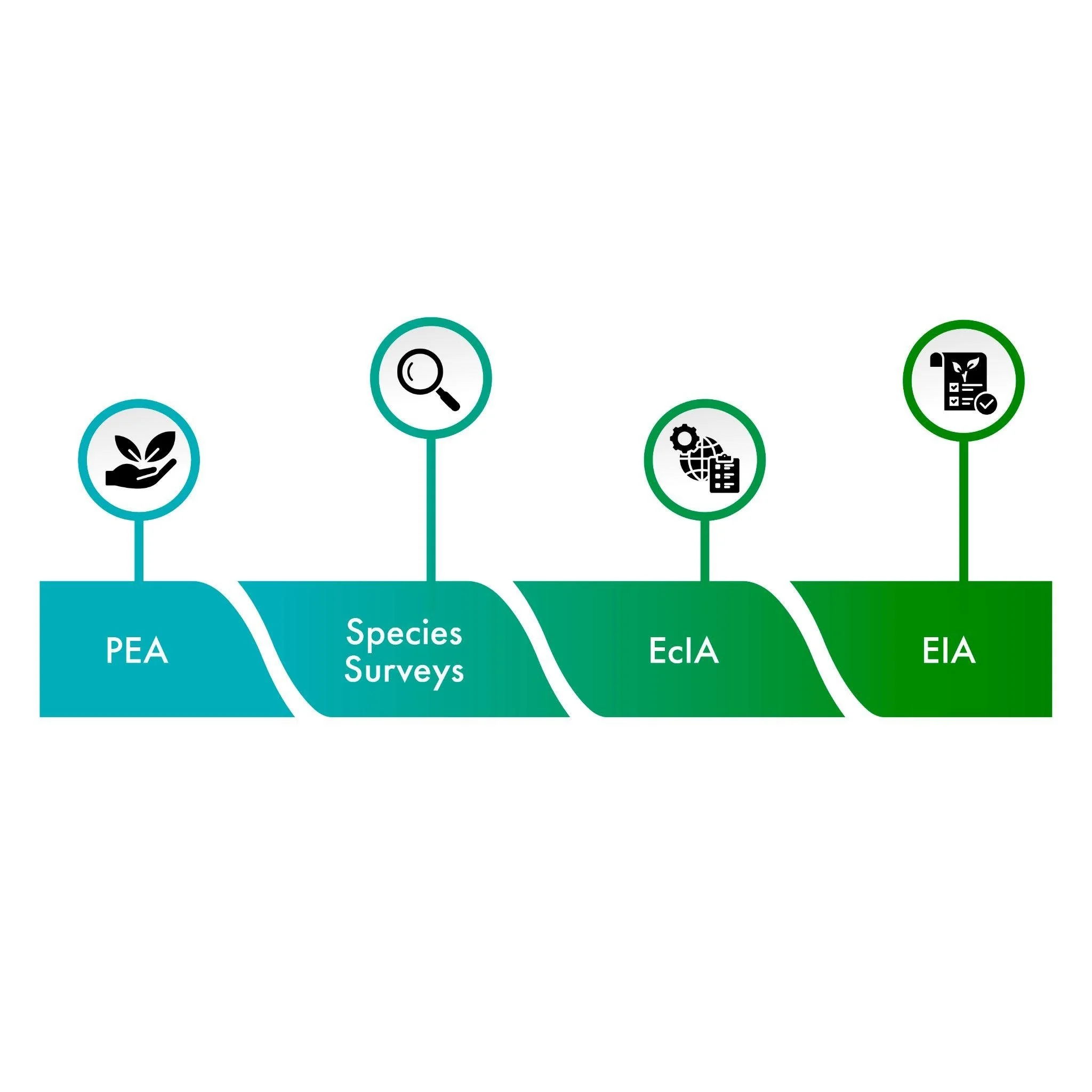Ecological Assessments & Meeting Regulatory Requirements
In an era of increasing environmental awareness and tightening legislation, ecological assessments and ecological surveying are no longer optional extras in the development process. For landscape professionals, contractors, planners, or clients, understanding how these tools support compliance and why doing them early can save time, money, and reputation is essential.
What Are Ecological Assessments & Ecological Surveying?
Ecological surveying refers to the fieldwork (and often desk-based work) carried out by qualified ecologists to identify the species, habitats, and environmental features that exist on or near a site. This can include surveys for protected species (e.g., bats, newts, great crested newts, badgers), habitat types (woodland, grassland, water bodies), nesting birds, reptiles, or other wildlife, depending on ecology and geography.
Ecological assessments take the data from surveys and evaluate the impacts of a proposed development or land use change. The assessment considers how plans might affect ecological features (habitats, species, connectivity), what mitigation or compensation is needed, how to avoid or reduce harm, and whether “net gain” or enhancement of biodiversity is required.
Key types include:
Preliminary Ecological Appraisal (PEA) or Phase 1 Habitat Survey – a general baseline study.
Protected Species Surveys – detailed studies for specific species, often seasonal.
Ecological Impact Assessment (EcIA) – a more comprehensive evaluation of likely impacts, mitigation hierarchy, etc.
Environmental Impact Assessment (EIA) where developments that exceed certain thresholds or are in sensitive areas.
Regulatory Requirements for Landscape Maintenance & Development
Landscape maintenance and development projects must satisfy a variety of legal/regulatory standards designed to protect biodiversity and ensure sustainable land use. Under the Environmental Impact Assessment Regulations (2017), certain developments require screening, and if significant impacts are likely, a full Environmental Impact Assessment is needed. The Chartered Institute of Ecology and Environmental Management (CIEEM), also provides recognised guidelines for Ecological Impact Assessments, ensuring consistent and robust reporting across different environments. Alongside this, BS 42020:2013 sets out a code of practice for integrating biodiversity into planning decisions. More recently, the introduction of Biodiversity Net Gain has made it a legal requirement for most developments in England to deliver at least a 10% increase in biodiversity from February 2024, ensuring projects go beyond compliance to actively enhance the natural environment.
How Ecological Assessments Support Planning Applications
Ecological assessments play a vital role in strengthening planning applications. They not only demonstrate that a project complies with environmental laws but also provide decision-makers with the information they need to assess potential impacts. When carried out thoroughly, these assessments help avoid delays, reduce risk, and improve the likelihood of approval.
Key ways ecological assessments support the planning process include:
Demonstrating legal compliance: By including ecological data and clear mitigation measures, planning applications show how proposals meet legislation on protected species, habitats, and wider environmental responsibilities.
Applying the mitigation hierarchy: A cornerstone of ecological regulation is the mitigation hierarchy, which requires developers to first avoid harm, then mitigate unavoidable impacts, and finally compensate for any residual effects. A well-prepared assessment sets out how each step will be addressed.
Delivering biodiversity net gain: Increasingly, planning authorities require evidence that projects will not only protect existing biodiversity but also enhance it. Ecological assessments can highlight opportunities for habitat creation, connectivity, or other improvements that support biodiversity net gain.
Providing evidence for decision-makers: Robust ecological surveys supply the objective data local authorities, inspectors, and environmental agencies need to make informed decisions. Without sufficient information, applications risk delays, refusal, or the imposition of costly planning conditions.
Benefits of Early Ecological Assessment
For landscape professionals, getting ecological assessments and surveys done early in the project lifecycle brings several advantages:
1. Avoiding costly delays
Late discovery of a protected species or habitat on site can force redesigns, additional surveys (often seasonally constrained), mitigation that wasn't budgeted, or even refusal of permission. Early assessment helps anticipate these risks.
2. Better design integration
If you know up front where sensitive areas are, you can adjust layouts, routing, and landscaping proposals to avoid impacts, enhancing both ecology and aesthetics. This typically reduces mitigation/compensation costs.
3. Lower risk & smoother process
Applications with robust ecological evidence tend to have fewer legal or regulatory challenges. Early discussions with planning authorities, using assessments, can smooth the path to approval.
4. Enhancing reputation & sustainability credentials
Demonstrating awareness of ecological factors, commitment to biodiversity, and regulatory compliance can strengthen your project’s standing, whether with clients, funders, or the public.
Ecological Assessments: The Key to Smarter, Sustainable Projects
For landscape professionals, the key to meeting regulatory requirements is to integrate ecological assessments early and effectively into every project. Engaging a licensed ecologist at the outset ensures the right surveys are carried out at the right time, with Phase 1 habitat surveys or Preliminary Ecological Appraisals often providing a vital first step. By planning surveys, understanding the site’s ecology, and incorporating mitigation into the design, projects can progress more smoothly through the planning process.
Using tools such as the statutory biodiversity metric supports biodiversity net gain, while long-term maintenance ensures that habitats and enhancements continue to deliver value beyond project completion. Taken together, these practices make ecological surveying and assessment indispensable tools for delivering compliance, avoiding costly delays, and achieving developments that balance environmental responsibility with project success. For expert support with ecological assessments, ecological surveying, and sustainable landscape maintenance, contact Lizard Landscape Ecology today.


